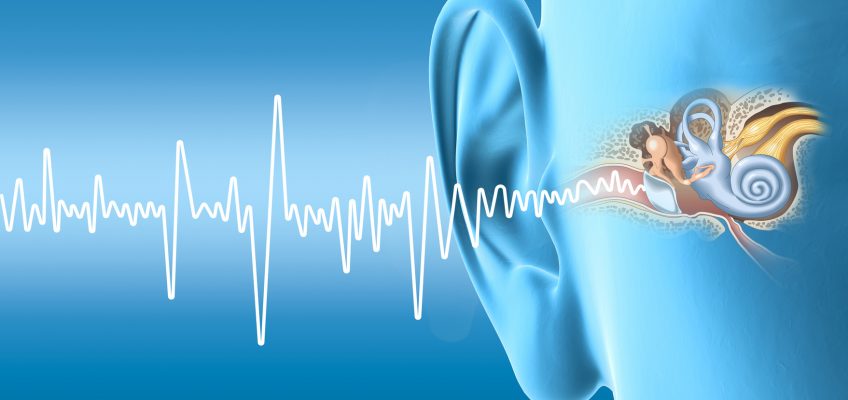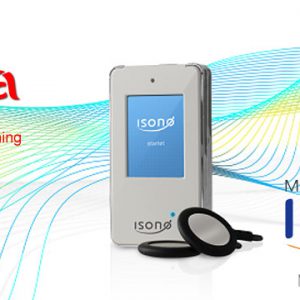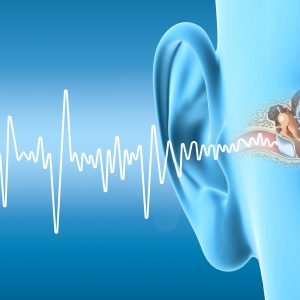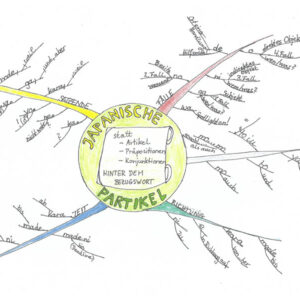Most people (at least in Germany) already are able to read and write their native language when they start learning a foreign language. With children of a different ethnic background this is not the case. In Germany a lot of children now have the chance to start learning English or French by listening to and repeating what their teacher says. However, the teachers of foreign languages at grammar school (! in Germany they are called Gymnasium) or polytechnic schools think of this as a waste of time and efforts. In the eyes of the French otorhinolaryngologist Alfred Tomatis hearing and speaking are intimately related. His findings need to be incorporated in the way we teach and learn languages as they suggest that any kind of language lesson needs to start off with hearing only.
Bilinguality - an Asset to Learning Languages
I was lucky enough to not only to have been brought up bilingually with English and German, but to start learning French in a playful way from age 7 onward. The first 2 years was all by listening, repeating and then formulating sentences without writing. When I finally started learning English in grade 5 and French in grade 7, learning was easy and the classes almost boring. However, it was many years later, that I finally realized what a great asset those experiences were. I was driven to find scientific research and possibilities to make language learning easier for everybody. Reading Dr. Alfred Tomatis's autobiography "The Ear and Life" (I read it in German) was full of inspiration.
Alfred Tomatis
Trained as an otorhinolaryngist Alfred Tomatis (1920 - 2001) had been born in Nice into a family of opera-singers of italian heritage. His studies on hearing have greatly contributed to methods of learning languages. He is often cited with his saying, that the voice box will only produce those sounds that can be heard by the ear. It was through his work with singers that he discovered just how closely related the voice and the ear are.Enrico Caruso's hearing problems even led to his characteristic voice. At home in Zuhause in Nice everybody spoke the local dialect, the Patois. His grandfather who had taught himself French, was his big role model. Young Tomatis himself had trouble learning French at school, but early on he discovered that he could remember facts a lot better if he read the texts aloud. By the way, I also used that strategy myself at least in my language studies, and the subjects of history and geography.
There were times when the texts were still read aloud in class. However, nowadays teachers and students think, this is too boring. Modern language teaching at school is focussed (at least in Germany) on communication. That fact itself is definitely a positive trend. But students still have to memorize lists of vocabulary and study the rules of grammar, even without hearing and using the vocabulary and grammar in context. Sometimes old methods did have a deeper meaning - they do need to be revised and modernized but doing away with them does not do the students a favour.
The following paragraphs are dedicated to how Dr. Tomatis's findings can have a positive impact on learning a foreign language.
Hearing is the Foundation of Speaking
Many learners of a foreign language know the agony of trying to produce the unique special sounds of that language. For Germans it's the correct pronunciation of the "th". To them it sounds like an "s" and therefore they pronounce it just like an "s". And that's exactly where the problem is to be found: This learner never had the chance to hear this sound during his childhood if he was raised in a family, that had no contact with the english language. Alfred Tomatis found out, that even the unborn child begins to hear its mother's voice and the surrounding sounds already in the fifth month of pregnancy. So this could very well be the reason, why it is so easy for us to learn our native language: We have gotten familiar to its sounds before birth. As long as the mother does not speak or listen to any other languages during pregancy her child, too, is only being prepared for this mother tongue.
In Alfred Tomatis's autobiografy "The Ear and Voice" ) he tells the story of a four-year-old French girl that understood English better than French. Her father had taken her to him, as he was worried this would become a handicap for her. Tomatis, however, asked him, whether her mother had not been speaking English during the pregnancy. And in fact, she had been working as an interpreter during the first three months only.
Hearing can be trained
Tomatis went on to develop the so called "electronic ear" to help his patients to develop better hearing faculties. His collegue André Le Gall's is cited in Tomatis's autobiography to have said about further uses of this device: "A Frenchman can - by spending a lot of time in England or even faster by using this device - train himself to have an excellent accent, however, as soon as he is back in Paris he will be hearing and speaking French again.
On youtube I even found proof that the electronic ear has in fact been used in such a way: Actor Gérard Depardieu explains in Franch how he learnt English with the Tomatis-Method (english transcript is available). He mastered the language to such an extent and minimized his French accent, to become a successful actor in Hollywood.
Priming with ISONO:
Learning a Foreign Language much faster
The ISONO device for example is a modern type of the electronic ear. With this device audios are transported via ultrasonic sound to the body of the language leaner. With this help he can simulate in a short period the process of a child learning its mother tongue, including the unconcious parts before birth. As Tomatis and american colleagues realized later, the first phase of learning the language already starts before birth. The ISONO device simulates this. And it is enough to use it for one hour twice a day.
After birth the child also hears its native language via the ears and an ISONO user would be listening to the audio via the ears from the 4th week onward. Of course not understanding much, just like the baby or toddler.
Just recentlly a friend of mine - Marokkoan but raised in Germany - told me, that she had met many people in Egypt who had learnt to speak German almost perfectly - without any language lessons at school, or studying German literature at university or even staying in Germany for a prolonged time. However, they made extensive use of German TV, as all the German TV channels are also available in Egypt. So those starting early and watching a lot of German TV can learn the language without ever taking lessons. Just like learning the mother tongue! However, the learning process can be accelerated.
The Activation Course:
Opening the door to speaking a new language
Once a child is born it takes a couple of years to complete the process via single words and short sentences until it has mastered its native language. Reading and writing skills are acquired later on. We recommend an activation course after priming with the ISONO device. This course usually takes 2 days of 8 lessons of 45 minutes. Here the ISONO user get concious to the grammatical structure of the language - usually with the help of a native speaker. Within this very short couse they are able to reach a good level of understanding (classified as A2 or even B1) That is, they can express themselves adequately in every day life. So an activation course condenses the 3 years of learning a native language, as the vocal box of an adult is already fully developed. Proper pronunciation has been prepared with the ISONO as well as an intuitive understanding of grammar. And understanding the words has been trained by "active listening" - listening via the ears while reading the translation word by word in their native language.
The ISONO can also enhance the reactivation of the knowledge of languages learnt a long time ago but forgotten as they were not applied for a longer period, or to get a better pronunciation. As it is used while doing something else, it makes possible to stay in contact with a language you currently are not using regularly. That is very useful if you don't have the time to read, watch videos or have conversations with a native speaker (tandem partner). It is astonishing just how fast you get back to the level you used to have when you start with a few weeks in the passive mode and then move on to the active listening (reading the text while listening). The ability to speak will come back quite naturally. You can do that in self-study mode or book an activation course on a higher level.
Want to know more about learning a language with the ISONO device? Contact me.










